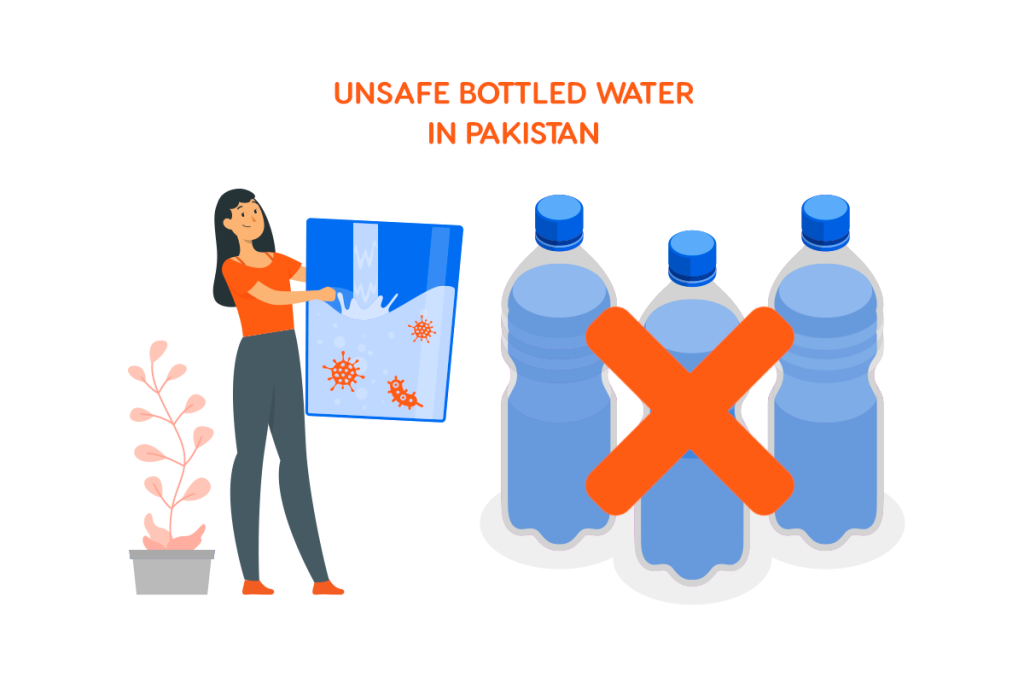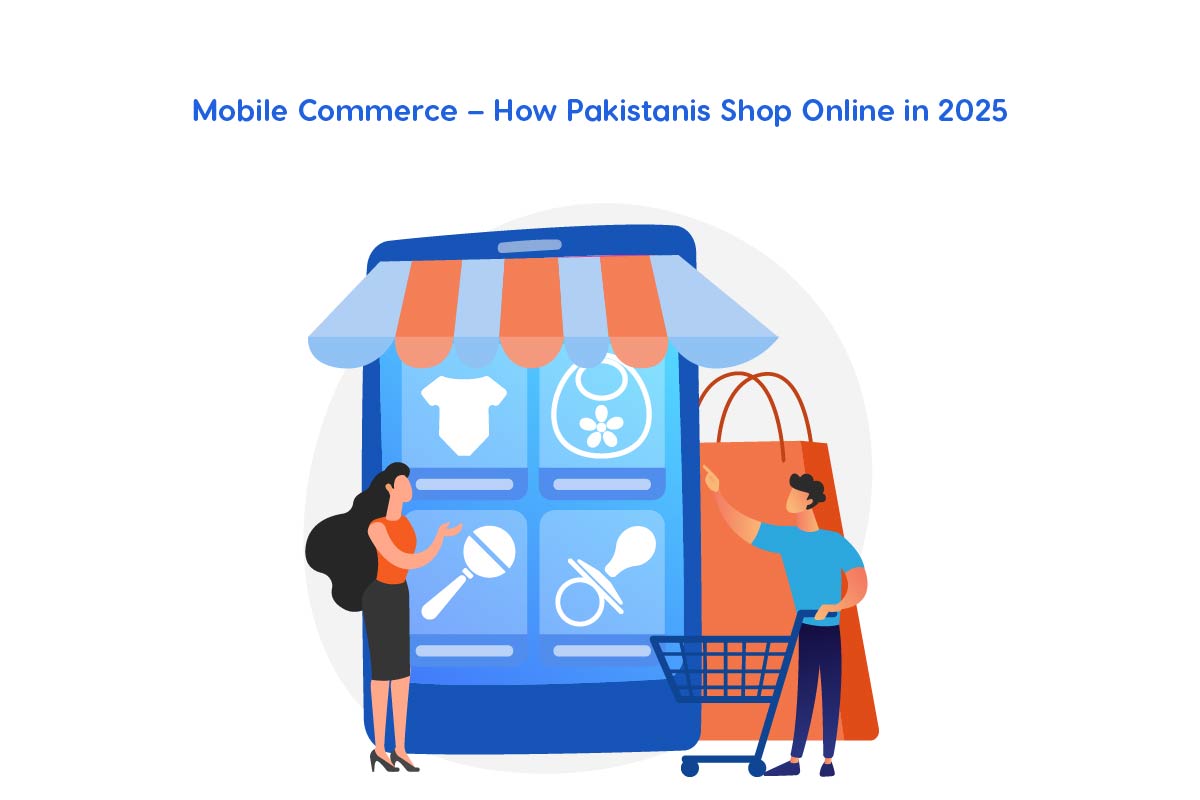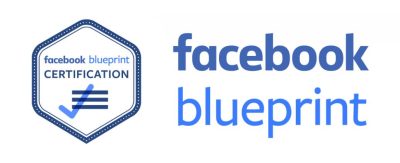Drinking water quality is deteriorating continuously due to biological contamination from chemical pollutants from industries, human waste and agricultural inputs. In Pakistan, Piped water also gets contaminated because pipes are spread very close to sewerage lines and cause many serious waterborne diseases. According to the World Health Organization (WHO) 26-30% of the diseases are gastrointestinal in nature. A recent study revealed that 45% of infant deaths in Pakistan are caused by diarrhea while nearly 60% are linked to various infectious waterborne diseases. This inferior quality of drinking water has forced a large cross-section of Pakistani citizens to buy bottled water. In the last 5 years, the country’s bottled water industry has grown rapidly due to its increasing demand in big cities. However, many of the mineral water companies were found selling contaminated water in Pakistan.
To monitor and improve the quality of bottled water, the government of Pakistan has designated the PCRWR as the focal point agency. Pakistan Council for Research in Water Resources (PCRWR) declared that 19 bottled and mineral water brands are unsafe for human consumption due to chemical contamination or microbiological. The government of Pakistan has directed PCRWR to monitor bottled and mineral water brands quarterly and publicize its results to raise public awareness nationwide. In this thorough article, our Tashheer research team explained which water brand is not good for drinking in Pakistan.
Read more about: Top 10 Hospitals in Pakistan
Collection and Analysis of Samples
Cities Targeted: 22 (Islamabad, Rawalpindi, D.G. Khan, Multan, Sargodha, Sahiwal, Faisalabad, Quetta, Tando Jam, Gujranwala, Badin, Sialkot, D.I. Khan, Bahawalpur, Karachi, Lahore, Mianwali, Peshawar, Muzaffarabad, Gilgit, Loralai, and Sukkur)
Total Brands Collected: 185
Sample Collection Team
One Research Officer and one Laboratory Assistant from PCRWR, along with a senior staff member and field officer from PSQCA, as per the MoU signed between PCRWR and PSQCA.
Transparency:
Sample 1
Sample 2
Sample 3
Sample 4
Comparison with PSQCA Standards
Water quality parameters are important indicators for checking the safety and suitability of water for various purposes including drinking, irrigation, and industrial processes. Analyzing these parameters requires precise methods to ensure accurate results. Here is the list of all the important parameters that PCRWR used according to PSQCA Standards to check the quality of bottled water. The Government of Pakistan launched the Pakistan Standards and Quality Control Authority (PSQCA) by Act-VI of 1996 to provide one-stop services for Standardization and Conformity Assessment.
Here is the list of water quality parameters and methods used for analyzing these bottled water samples, listed as:
| Parameters | Analytical Method |
| Alkalinity (mg/l as CaCO3) | 2320-B, Titration Method (APHA-23rd edition) |
| Arsenic (ppb) | AAS Vario 6, Analytik Jena AG |
| Calcium (mg/l) | 3500-Ca, EDTA Titrimetric method (APHA-23rd edition) |
| Carbonate (mg/l) | 2320-B, Titration Method (APHA-23rd edition) |
| Chloride (mg/l) | 4500-cl, Argentometric method (APHA-23rd edition) |
| Color (TCU) | Sensory Test |
| Conductivity ( S/cm) | E.C meter, BANTE-890, 2510-B (APHA-23rd edition) |
| Hardness (mg/l) | 2340-C, EDTA Titrimetric method (APHA-23rd edition) |
| Magnesium (mg/l) | 3500-Mg (Calculation Method), APHA-23rd edition |
| Nitrate Nitrogen (mg/l) | 4500-NO3-B UV-Spectrophotometric method |
| Odor | Sensory Test |
| pH | pH Meter, Hanna Instrument, Model 8519, Italy |
| Potassium (mg/l) | 3500-K, (APHA-23rd edition) |
| Sodium (mg/l) | 3500-Na, (APHA-23rd edition) |
| Sulfate (mg/l) | 4500- SO 2−4 (Turbidetric Method) , (APHA-23rd edition) |
| Phosphate (mg/l) | 8190 and 8048 (Hach) |
| Taste | Sensory Test |
| TDS (mg/l) | E.C meter, BANTE-890, 2510-B (APHA-23rd edition) |
| Turbidity (NTU) | Turbidity Meter , 2510-B (APHA-23rd edition) |
Water Quality Permissible Limits for Bottled Water in Pakistan
Here are the permissible limits explained below.
| Sr. # | Parameter | Units | Permissible Limits |
| 1 | Alkalinity | (mg/l) | NGVS |
| 2 | Bicarbonate | (mg/l) | NGVS |
| 3 | Calcium | (mg/l) | NGVS |
| 4 | Carbonate | (mg/l) | NGVS |
| 5 | Chloride | (mg/l) | 250 |
| 6 | Color | (TCU) | 15 |
| 7 | Conductivity | (µS/cm) | NGVS |
| 8 | Fluoride | (mg/l) | WHO: 1.5, IBWA: 3, PSQCA: 0.7 |
| 9 | Hardness | (mg/l) | NGVS |
| 10 | Iron | (mg/l) | 0.3 |
| 11 | Magnesium | (mg/l) | NGVS |
| 12 | Odor | (mg/l) | Odorless (NGVS), Unobjectionable (PSQCA) |
| 13 | Nitrate-N | (mg/l) | 10 |
| 14 | pH | (mg/l) | WHO: 6.5-8.5, PSQCA: 6.5-8.5 |
| 15 | Potassium | (mg/l) | NGVS |
| 16 | Sodium | (mg/l) | WHO: 200, PSQCA: 50 |
| 17 | Sulfate | (mg/l) | 250 |
| 18 | Taste | (mg/l) | Unobjectionable (NGVS), Unobjectionable (PSQCA) |
| 19 | TDS | (mg/l) | WHO: 1000, IBWA: 500, PSQCA: 500 |
| 20 | Turbidity | (NTU) | 5 |
| 21 | Phosphate | (mg/l) | NGVS |
| 22 | Arsenic | (µg/l) | 10 |
| 23 | Total Coliforms | CFU/100ml | 0 |
| 24 | E-coli | CFU/100ml | 0 |

Identification of 19 Unsafe Brands Due to Microbiological or Chemical Contamination
When test results compared against the bottled water quality standards set by the Pakistan Standards and Quality Control Authority (PSQCA) showed that 19 brands did not meet the criteria for safe human consumption water due to either microbiological or chemical contamination.
List of Unsafe Brands and Contaminants
Six brands, such as Hensley Pure Water, Pure Life, Natural Pure Life, Klear, Am Mughal Pure Water, and Nero, were found to be unsafe due to higher sodium levels. Brand Nero was found to be unsafe due to a higher level of totally dissolved solids (TDS) than the permissible limit in Pakistan.
PCRWR also stated in its report that Starlay, Al-Faris Water, Nesspure, Pure Life, Nestlo Healthy Water, Nesspak, Natural Pure Life, Geo Max Premium, Karakorum, Cleana, Splash, Heavenly and 7 Bro were found contaminated with bacteria and thus were unsafe for drinking purposes. Similarly, Orwel, Cleana, and Still were found unsafe due to the presence of higher level of arsenic than the permissible limit.
Here is the list of Unsafe Bottled Water Brands declared by PCRWR, mentioned as
| Sr. No | Brand Name | Contaminant |
| 1 | Al-Faris Water | Bacterial contamination |
| 2 | Geo Max Premium | Bacterial contamination |
| 3 | Karakorum | Bacterial contamination |
| 4 | Nesspak | Bacterial contamination |
| 5 | Hensley Pure Water | Higher sodium levels |
| 6 | Pure Life | Higher sodium levels |
| 7 | Natural Pure Life | Higher sodium levels |
| 8 | Klear | Higher sodium levels |
| 9 | Am Mughal Pure Water | Higher sodium levels |
| 10 | Nero | Higher TDS level |
| 11 | Starlay | Bacterial contamination |
| 12 | Nesspure | Bacterial contamination |
| 13 | Nestlo Healthy Water | Bacterial contamination |
| 14 | Cleana | Bacterial contamination |
| 15 | Splash | Bacterial contamination |
| 16 | Heavenly | Bacterial contamination |
| 17 | 7 Bro | Bacterial contamination |
| 18 | Orwel | Higher arsenic level |
| 19 | Still | Higher arsenic level |
PCRWR Recommendations and Public Awareness
World Health Organization (WHO) stated that approximately 2.3 billion people do not have direct access to safe drinking water worldwide. Drinking water may contain countless chemical, biological, and physical impurities. However, the increasing technological and population growth further adversely affects drinking water quality worldwide. Raising public awareness about drinking water quality is important factor for safeguarding human health worldwide. PCRWR sets quality standards for bottled water, ensuring its safety for consumption by keeping it free from contaminants. It also engage in public awareness campaigns to educate Pakistani people about the importance of choosing safe and quality bottled water products. These awareness seminars may include information on how to read labels, understand quality certifications and identify best brands.
Read more about: Top 8 ISO Certification Companies in Pakistan
Disease Potential from Contaminated Bottled Water
The disease potential from the contaminated bottled water is given below.
| Sr. No | Contaminant | Diseases Impacts |
| 1 | Bacteriological | Cholera, Diarrhea, Dysentery, Typhoid etc. |
| 2 | Sodium | Hypertension |
| 3 | Potassium | Hyperkalemia |
Final Words
Access to safe drinking water is a basic human right. Pakistan Vision 2025 and the UN Sustainable Development Goals (SDGs) 2030 impose responsibilities on PCRWR to achieve its water and sanitation goals, In this research article, our Tashheer research team explained the report which tells that 19 water brands are not good for drinking in Pakistan. PCRWR advised the Pakistani public to read the detailed report to understand the water quality status of Pakistani bottled water brands they consume. It added that the comprehensive report is accessible on their website at www.pcrwr.gov.pk.





